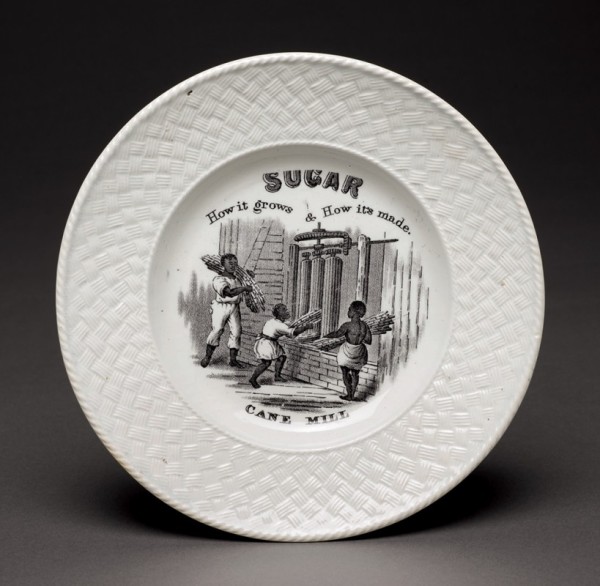
Plate, possibly John Carr & Son(s), North Shields, Northumberland, England, ca. 1854–1861. Lead-glazed white earthenware, black enamel. D. 7 1/8". Marks: on the obverse, “SUGAR / How it grows & How it’s made. / CANE MILL”; printed “G” on the reverse. (Historic Deerfield, Museum Collections Fund, 2020.3.1; photo, Penny Leveritt.)
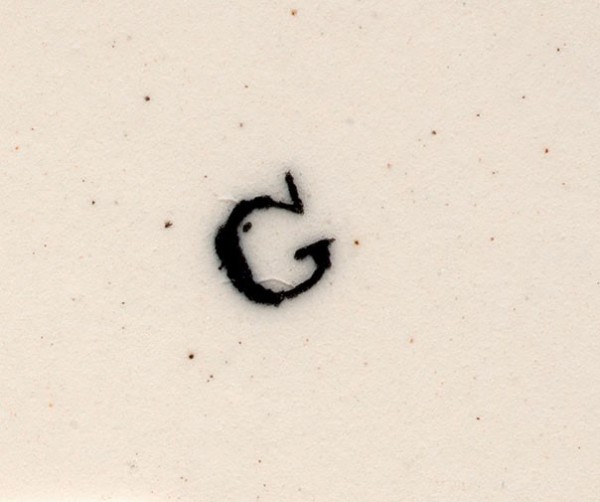
Detail of the printed “G” mark on the reverse of the plate illustrated in fig.1
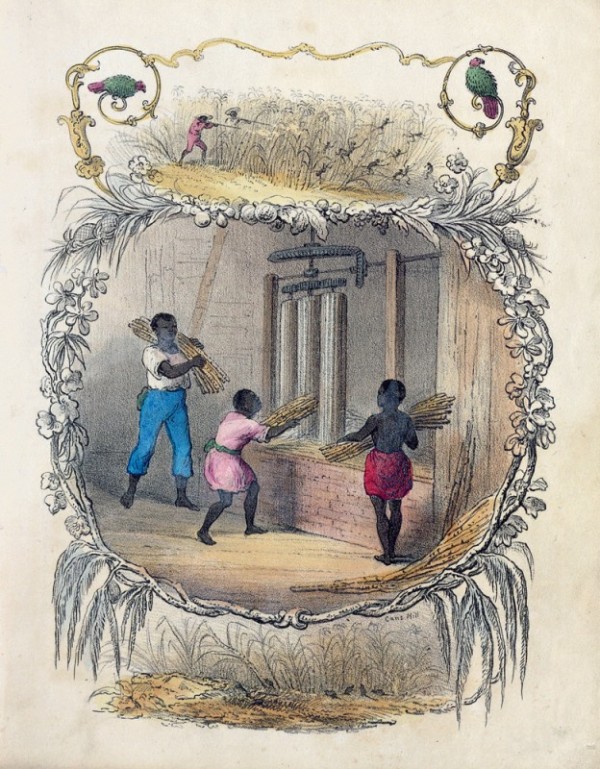
“Cane Mill,” from J.L.S., Sugar: How It Grows, and How It Is Made: A Pleasing Account for Young People (London: Darton and Clark,ca. 1845). (Courtesy, Lilly Library, Indiana University, Bloomington.) This engraving served as the design source for the transfer-printed scene on the plate illustrated in fig. 1.
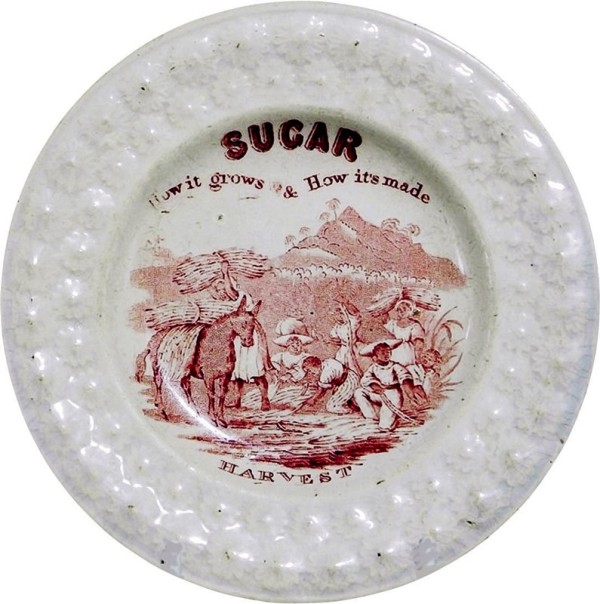
Plate, John Carr & Sons, North Shields, Northumberland, England, ca. 1861. Lead-glazed white earthenware, red enamel. D. 8 1/4". Marks: on obverse, “SUGAR / How it grows & How it’s made / HARVEST”; impressed on reverse, “JOHN CARR & SONS” with anchor and stag’s head. (Courtesy, Transferware Collectors Club Database of Patterns and Sources.)

“Harvest,” from J.L.S., Sugar: How It Grows, and How It Is Made: A Pleasing Account for Young People (London: Darton and Clark, ca. 1845). (Courtesy, Lilly Library, Indiana University, Bloomington, Indiana.) This engraving served as the design source for the transfer-printed scene on the plate illustrated in fig. 4.

Plate, John Carr & Co., North Shields, Northumberland, England, ca. 1850. Pearlware, polychrome enamels. D. 8 1/4". Marks: on obverse, “SUGAR / How it grows & How it’s made / OPEN PAN BOILING”; reportedly impressed on reverse, “J. CARR & Co” (Courtesy, Kinghams Auctioneers.)
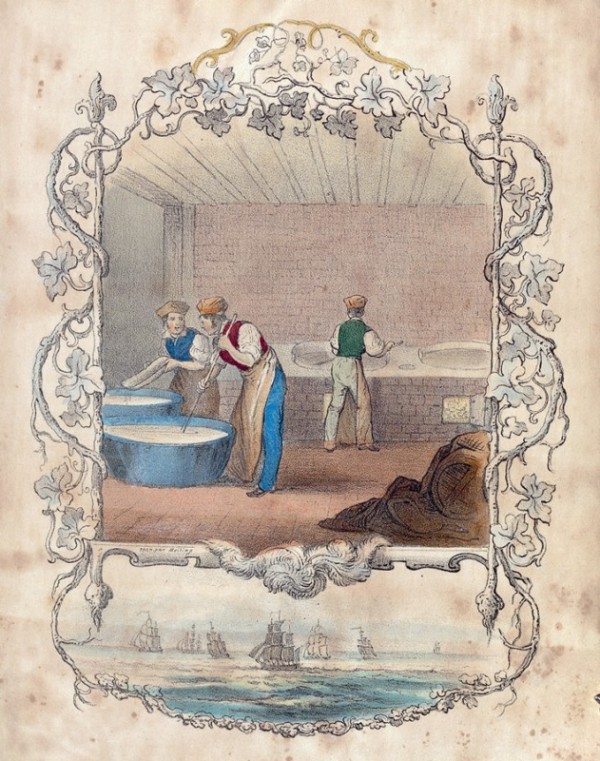
“Open Pan Boiling,” from J.L.S., Sugar: How It Grows, and How It Is Made: A Pleasing Account for Young People (London: Darton and Clark, ca. 1845). (Courtesy, Lilly Library, Indiana University, Bloomington, Indiana.) This engraving served as the design source for the transfer-printed scene on the plate illustrated in fig. 6.
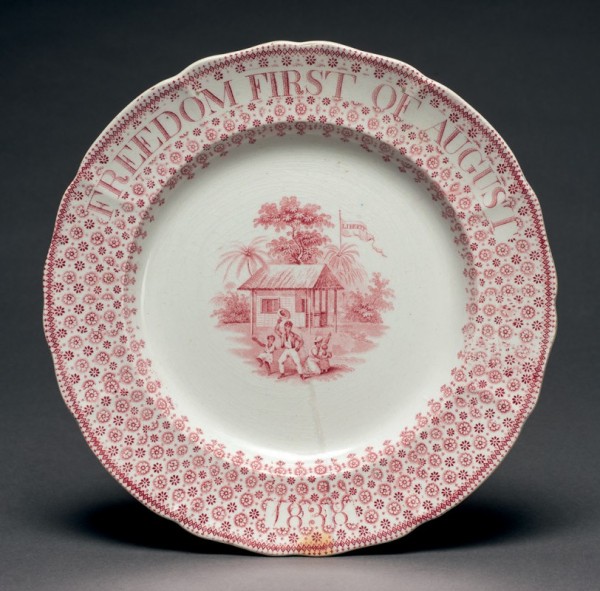
Plate, probably Staffordshire, England, ca. 1838. Lead-glazed earthenware. D. 10 1/2". Marks: on rim, “FREEDOM FIRST OF AUGUST / 1838”; on flag, “LIBERTY” (Historic Deerfield, Museum Collections Fund, 2020.28; photo, Penny Leveritt.) The emancipation of the enslaved in the British West Indies on August 1, 1838, was commemorated on a number of British ceramics, such as this plate. Although a cause for celebration, emancipation did not immediately end the struggles of the formerly enslaved in the British West Indies.
